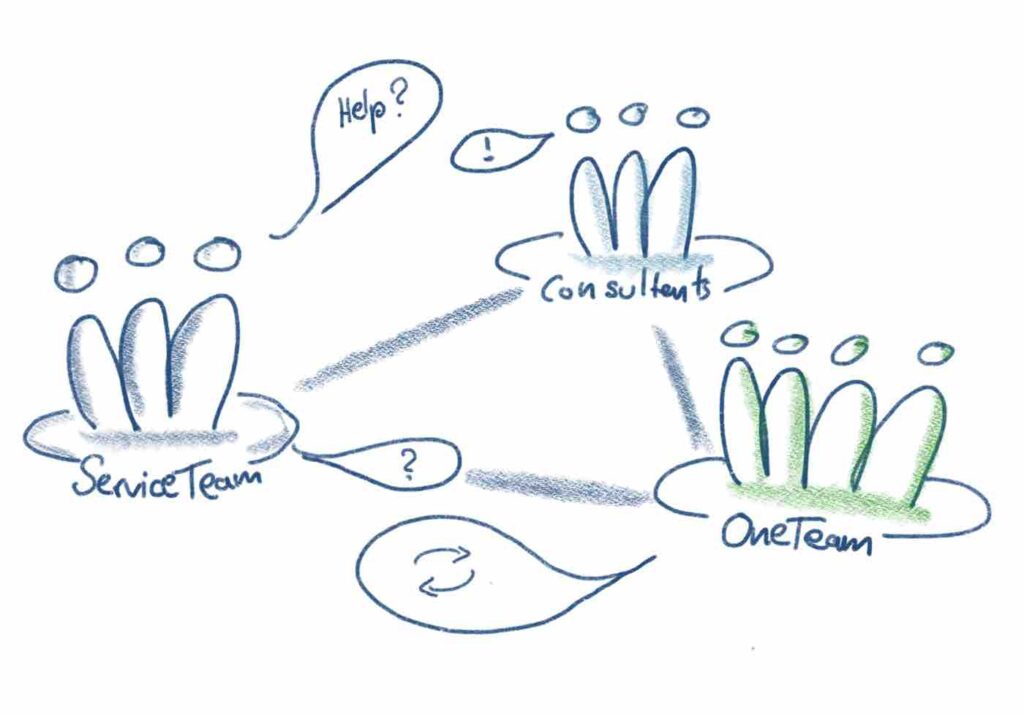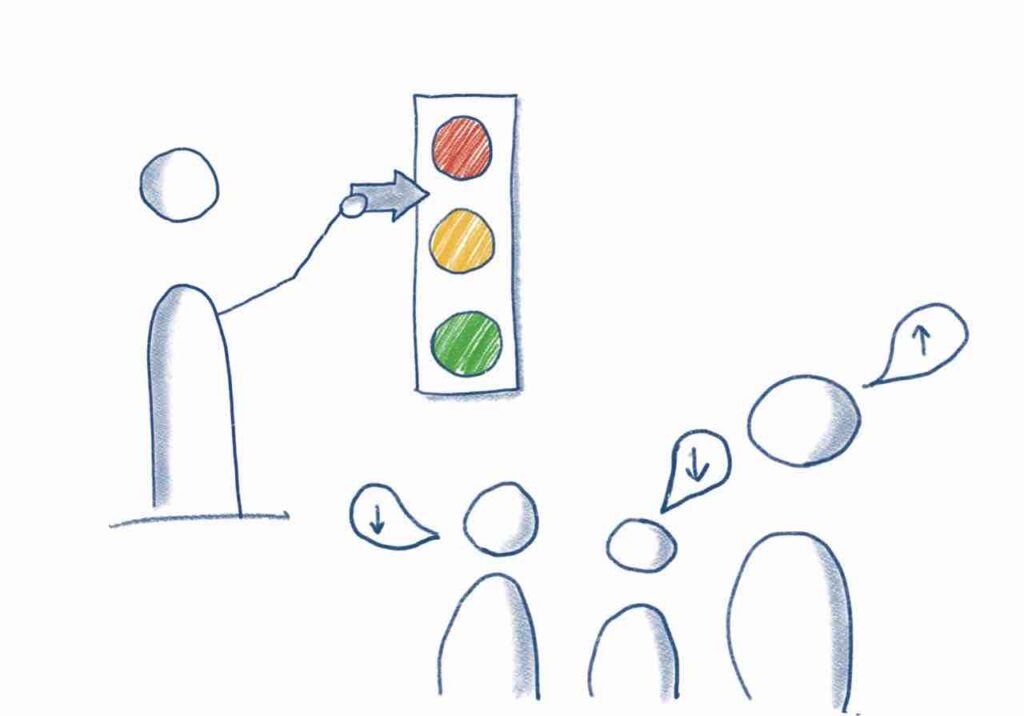In one of our last articles, we took a closer look at the success story of our service team. Today we would like to give you an insight into some of the team's learnings: With growing areas of responsibility, the team had to learn what it means to prioritize and say no.
In addition to their daily work, the team also had all kinds of other tasks to complete. There were also requests from employees and customers - tasks and requests that could not be planned for. The sheer volume of these unplannable things soon meant that the team couldn't keep up with the daily work.
The problem soon came up in a retrospective. The team talked about it and decided to turn down other requests in future if there was no time for them. No sooner said than done. The next request, which went beyond daily work, was successfully blocked.
The problem was that the urgency of such requests was misjudged. There was also a lack of a solution-oriented attitude when communicating the rejection. Based on the feedback given to the team, it turned out to be good practice to ask the following questions:
- Where exactly is support needed?
- How urgent is the request? / Until when is support needed?
This information enabled the team to better assess tasks and requests.
Define and prioritize service classes
As not all tasks can always be completed and some things have to be put on hold for the time being, the following question arose: Which tasks are the most important and what can be postponed? To answer this question, the team enlisted the help of the product owner, who provided support with his experience and knowledge of the company.
In order to define the most important tasks, it was first necessary to determine who the target group is and what should be offered to them. This resulted in the Service Team Vision. This is structured similarly to a value proposition.
For [user] the [requirement, benefit, opportunity] is [company/product/service] the [category] the [core benefit]
In contrast to [competition, alternative] , [differentiator] is
Once this step had been taken, the team was able to use it to define its service classes and SLAs. (SLA = Service Level Agreement, i.e. a contractually guaranteed service, e.g. a product is dispatched within 24 hours).
The service classes were also prioritized and made visible to everyone so that everyone in the team could remember and orient themselves. This created a basis for deciding which tasks needed to be completed first.
Creating transparency and thinking across teams
Once the team had established the service classes, it was possible to assess what needed to be done first. However, it was still unclear what would happen if the team identified capacity bottlenecks. The team now had to learn to ask for support. Many people often find this difficult. Even if the employees openly signal that they are willing to help. It is a learning process to ask for support and to think beyond team boundaries. For this purpose, wibas has a company-wide daily (similar to the Scrum of Scrums) in which representatives from different teams are present.

There is currently a good example where the team has reached its limits: the team was unable to provide technical support for six parallel training courses at the same time. The team noticed this bottleneck early on and made it transparent. As a result, two available coaches were able to step in to help out.
Indicator: Traffic light system
As a reminder, because the service team is made up of students, work is sometimes staggered. The challenge was therefore to create a common understanding of the team's overall workload. A traffic light system was introduced for this purpose. This makes it transparent whether cross-team help is needed or whether there is enough capacity left to help out other teams and accept spontaneous requests.
The status of the traffic light is set by the service team in the team daily after discussing which tasks are due for the day and who will be working on what. With this basis, every team member knows how to react when employees approach the team with requests. The person representing the team also knows whether or not help should be requested in the cross-team daily.

Red: Not all service classes can be fulfilled.
Yellow: The service classes are just about covered. Extra tasks are discussed with everyone in the team before they are accepted.
Green: The service classes are covered and the team can accept additional requests without consultation.
But why prioritize?
There are several reasons for this. One fairly obvious reason is that there will always be more tasks than time. This means that not all work can always be done. By prioritizing, you can ensure that the available time is filled with the "right" things. In other words, with what is both important and urgent.
Prioritizing plays an important role in self-organization and time management. Steve Jobs once said "I'm as proud of what we don't do as I am of what we do." He is just as proud of what he does as he is of what he doesn't do. By leaving things undone, you create time and focus to finish other things.
If you don't prioritize, everything seems urgent and, as a result, everything loses urgency. This means you lose focus and it becomes more difficult to justify why you are picking out a particular task. If you prioritize, you also create focus.
Starting with the highest priority, you always have the certainty that you are working on the right task. This means that you can leave everything else behind without a guilty conscience. It is a conscious decision to fill your time with what is most important.
Authors:


More blog posts about the Service Team:
Our service team - a success story about responsibility and self-organization

Comments
Write a comment